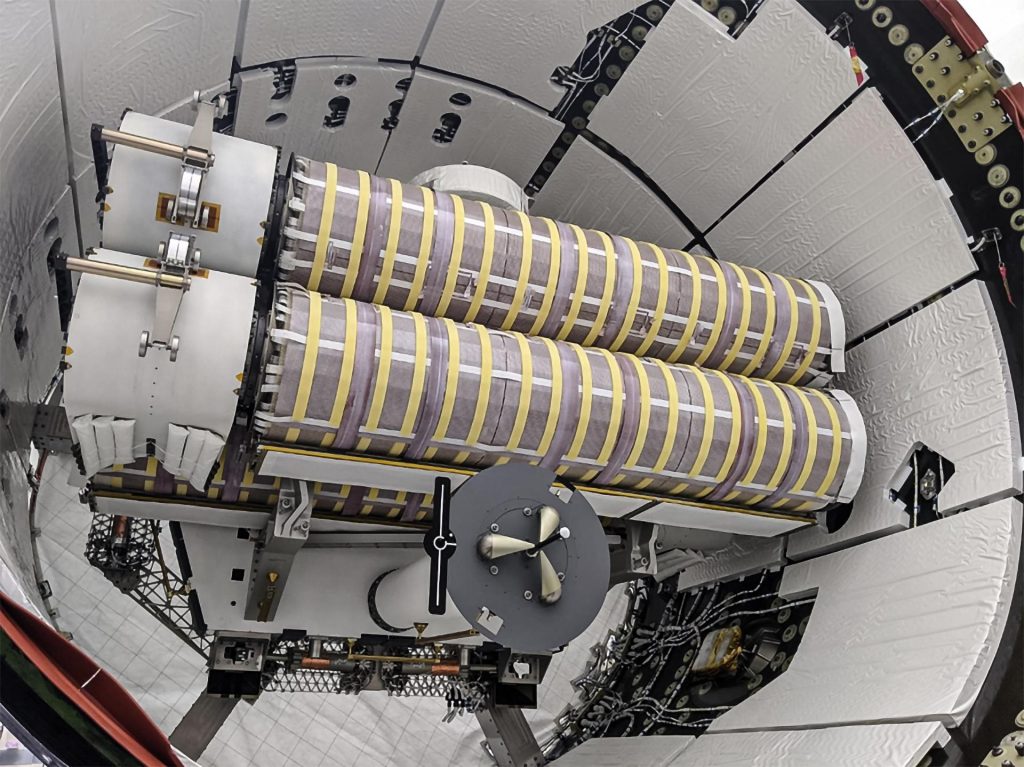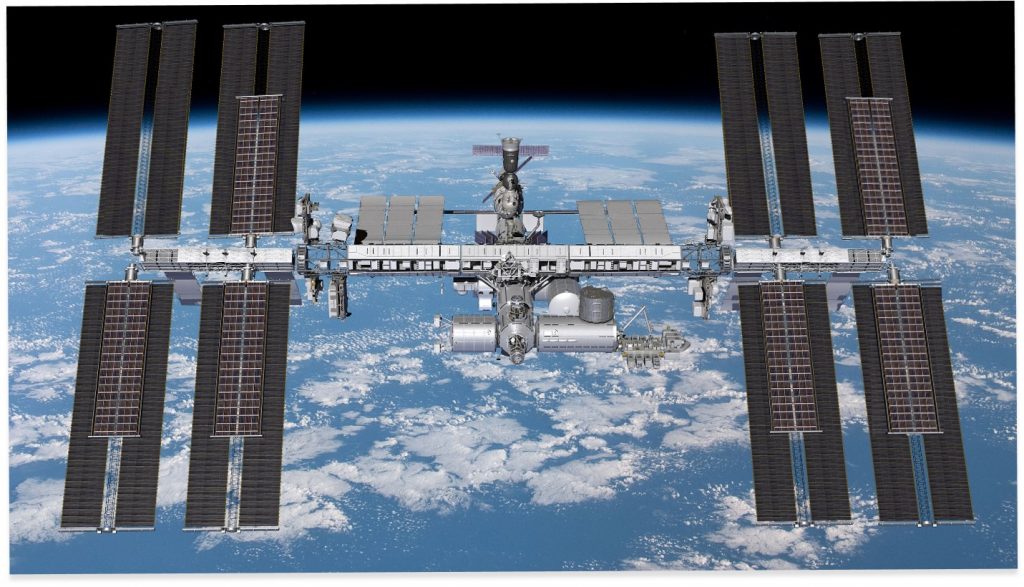

News
SpaceX’s second upgraded Dragon set to launch new solar arrays to the ISS
An all-new Falcon 9 rocket and upgraded Cargo Dragon spacecraft have rolled out to Kennedy Space Center Launch Complex 39A (Pad 39A) ahead of SpaceX’s second CRS2 space station resupply launch for NASA.
Scheduled to lift off no earlier than (NET) 1:29 pm EDT (17:29 UTC) on Thursday, June 3rd, the mission – known as CRS-22 – will be the first of up to four Falcon 9 launches scheduled this month. Cargo Dragon 2 debuted in December 2020 as part of CRS-21 and returned to Earth five weeks later, marking SpaceX’s third near-flawless inaugural launch of a new spacecraft. Heavily based on Crew Dragon, which first flew in March 2019, Cargo Dragon 2 is nevertheless significantly modified to optimize it for its exclusively cargo-oriented role.
That includes the removal of internal components, windows, and – most notably – Crew Dragon’s system of SuperDraco abort thrusters to make more room and free up more mass for non-astronaut cargo.
Atop new Falcon 9 booster B1067, CRS-22 will lift off with more than 3300 kg (7300 lb) of cargo in tow. Aside from the usual science equipment, space suit parts, and consumables, CRS-22 will also carry part of a significant new upgrade planned for the International Space Station’s (ISS) basic power generation capabilities. Known as ISS Roll Out Solar Arrays, the new space station solar arrays are a direct follow-on to an experiment -ROSA – launched to the ISS on another Cargo Dragon in 2017.

As the name implies, unlike virtually all other modern spacecraft solar arrays, which generally unfold as a number of flat panels, ROSA is flexible and deploys by unrolling. In theory, that allows for superior packing density to fit more power generation capacity in any given space-constrained launch. Indeed, many modern flagship communications satellites have begun to utilize roll-out solar arrays to expand their power supplies.
At the scale of the new ISS arrays, ROSA’s benefits are less clear, but improvements in solar cell efficiency still mean that six smaller iROSA arrays will be comparable to the ISS’ eight current solar wings.


While massive in their deployed state, each of the original eight ISS solar wings weigh approximately 1100 kg (2400 lb) and initially generated up to 31 kilowatts of power. Each iROSA will weigh around 690 kg (~1550 lb) at liftoff and generate a maximum of 20 kW – offering an almost identical mass efficiency of ~35 kg per kW as the existing arrays. Those new solar arrays will partially interfere with the station’s older arrays but both sets will continue to work, ultimately improving ISS power generation capabilities by 20-30%.
All six arrays will launch on Cargo Dragon missions CRS-22, CRS-25, and CRS-26, likely completing the ISS solar upgrade sometime in Q4 2022. iROSA will be one of the heaviest unpressurized payloads ever launched as cargo on a SpaceX Dragon spacecraft.

News
Tesla China quietly posts Robotaxi-related job listing
Tesla China is currently seeking a Low Voltage Electrical Engineer to work on circuit board design for the company’s autonomous vehicles.

Tesla has posted a new job listing in Shanghai explicitly tied to its Robotaxi program, fueling speculation that the company is preparing to launch its dedicated autonomous ride-hailing service in China.
As noted in the listing, Tesla China is currently seeking a Low Voltage Electrical Engineer to work on circuit board design for the company’s autonomous vehicles.
Robotaxi-specific role
The listing, which was shared on social media platform X by industry watcher @tslaming, suggested that Tesla China is looking to fill the role urgently. The job listing itself specifically mentions that the person hired for the role will be working on the Low Voltage Hardware team, which would design the circuit boards that would serve as the nervous system of the Robotaxi.
Key tasks for the role, as indicated in the job listing, include collaboration with PCB layout, firmware, mechanical, program management, and validation teams, among other responsibilities. The role is based in Shanghai.
China Robotaxi launch
China represents a massive potential market for robotaxis, with its dense urban centers and supportive policies in select cities. Tesla has limited permission to roll out FSD in the country, though despite this, its vehicles have been hailed as among the best in the market when it comes to autonomous features. So far, at least, it appears that China supports Tesla’s FSD and Robotaxi rollout.
This was hinted at in November, when Tesla brought the Cybercab to the 8th China International Import Expo (CIIE) in Shanghai, marking the first time that the autonomous two-seater was brought to the Asia-Pacific region. The vehicle, despite not having a release date in China, received a significant amount of interest among the event’s attendees.
Elon Musk
Elon Musk and Tesla AI Director share insights after empty driver seat Robotaxi rides
The executives’ unoccupied tests hint at the rapid progress of Tesla’s unsupervised Robotaxi efforts.

Tesla CEO Elon Musk and AI Director Ashok Elluswamy celebrated Christmas Eve by sharing personal experiences with Robotaxi vehicles that had no safety monitor or occupant in the driver’s seat. Musk described the system’s “perfect driving” around Austin, while Elluswamy posted video from the back seat, calling it “an amazing experience.”
The executives’ unoccupied tests hint at the rapid progress of Tesla’s unsupervised Robotaxi efforts.
Elon and Ashok’s firsthand Robotaxi insights
Prior to Musk and the Tesla AI Director’s posts, sightings of unmanned Teslas navigating public roads were widely shared on social media. One such vehicle was spotted in Austin, Texas, which Elon Musk acknowleged by stating that “Testing is underway with no occupants in the car.”
Based on his Christmas Eve post, Musk seemed to have tested an unmanned Tesla himself. “A Tesla with no safety monitor in the car and me sitting in the passenger seat took me all around Austin on Sunday with perfect driving,” Musk wrote in his post.
Elluswamy responded with a 2-minute video showing himself in the rear of an unmanned Tesla. The video featured the vehicle’s empty front seats, as well as its smooth handling through real-world traffic. He captioned his video with the words, “It’s an amazing experience!”
Towards Unsupervised operations
During an xAI Hackathon earlier this month, Elon Musk mentioned that Tesla owed be removing Safety Monitors from its Robotaxis in Austin in just three weeks. “Unsupervised is pretty much solved at this point. So there will be Tesla Robotaxis operating in Austin with no one in them. Not even anyone in the passenger seat in about three weeks,” he said. Musk echoed similar estimates at the 2025 Annual Shareholder Meeting and the Q3 2025 earnings call.
Considering the insights that were posted Musk and Elluswamy, it does appear that Tesla is working hard towards operating its Robotaxis with no safety monitors. This is quite impressive considering that the service was launched just earlier this year.
Elon Musk
Starlink passes 9 million active customers just weeks after hitting 8 million
The milestone highlights the accelerating growth of Starlink, which has now been adding over 20,000 new users per day.

SpaceX’s Starlink satellite internet service has continued its rapid global expansion, surpassing 9 million active customers just weeks after crossing the 8 million mark.
The milestone highlights the accelerating growth of Starlink, which has now been adding over 20,000 new users per day.
9 million customers
In a post on X, SpaceX stated that Starlink now serves over 9 million active users across 155 countries, territories, and markets. The company reached 8 million customers in early November, meaning it added roughly 1 million subscribers in under seven weeks, or about 21,275 new users on average per day.
“Starlink is connecting more than 9M active customers with high-speed internet across 155 countries, territories, and many other markets,” Starlink wrote in a post on its official X account. SpaceX President Gwynne Shotwell also celebrated the milestone on X. “A huge thank you to all of our customers and congrats to the Starlink team for such an incredible product,” she wrote.
That growth rate reflects both rising demand for broadband in underserved regions and Starlink’s expanding satellite constellation, which now includes more than 9,000 low-Earth-orbit satellites designed to deliver high-speed, low-latency internet worldwide.
Starlink’s momentum
Starlink’s momentum has been building up. SpaceX reported 4.6 million Starlink customers in December 2024, followed by 7 million by August 2025, and 8 million customers in November. Independent data also suggests Starlink usage is rising sharply, with Cloudflare reporting that global web traffic from Starlink users more than doubled in 2025, as noted in an Insider report.
Starlink’s momentum is increasingly tied to SpaceX’s broader financial outlook. Elon Musk has said the satellite network is “by far” the company’s largest revenue driver, and reports suggest SpaceX may be positioning itself for an initial public offering as soon as next year, with valuations estimated as high as $1.5 trillion. Musk has also suggested in the past that Starlink could have its own IPO in the future.








